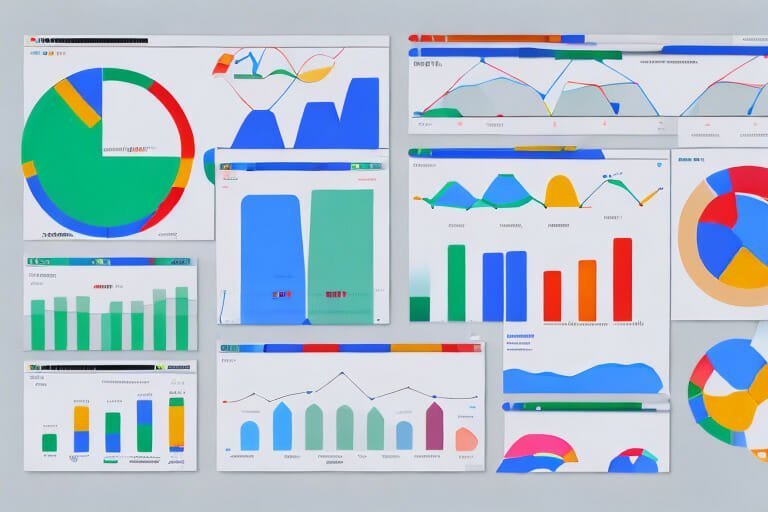In the fast-paced digital world, measuring advertising performance is crucial to optimizing your marketing strategy. With the abundance of data available, it can be overwhelming to determine which metrics are most important. When it comes to Google Ads, there are five key metrics that can provide valuable insights into your advertising performance. By understanding and analyzing these metrics, you can make data-driven decisions to enhance the effectiveness of your Google Ads campaigns. Let’s dive deeper into each metric to uncover their significance and how they impact your advertising success.
Understanding Google Ads Metrics
Google Ads Metrics are quantitative measurements used to track and analyze the performance of your Google Ads campaigns. These metrics provide valuable insights into the effectiveness of your ads, keywords, and targeting, allowing you to optimize your campaigns for better results. By measuring various aspects of your ads, Google Ads Metrics help you understand how well your advertising efforts are performing and where improvements can be made.
When it comes to Google Ads Metrics, there are numerous metrics to consider. One important metric is the click-through rate (CTR), which measures the percentage of people who clicked on your ad after seeing it. A high CTR indicates that your ad is compelling and relevant to the audience, while a low CTR may suggest that your ad needs improvement.
Another crucial metric is the conversion rate, which measures the percentage of people who completed a desired action, such as making a purchase or filling out a form, after clicking on your ad. A high conversion rate indicates that your ad is effectively driving desired actions, while a low conversion rate may indicate that your landing page or ad copy needs optimization.
Why are Google Ads Metrics Important?
Google Ads Metrics are essential because they provide you with the necessary information to make data-driven decisions. By understanding how your ads are performing, you can identify areas for improvement and take proactive measures to enhance your campaign’s effectiveness. With the right metrics at your fingertips, you can allocate your budget wisely, refine your targeting strategy, and optimize your ads for better results.
One of the key benefits of Google Ads Metrics is the ability to track return on investment (ROI). By analyzing metrics such as cost per conversion and revenue generated from ads, you can determine the profitability of your campaigns. This information allows you to make informed decisions about budget allocation and identify areas where you can maximize your ROI.
Moreover, Google Ads Metrics provide insights into audience behavior and preferences. Metrics such as average session duration and bounce rate can help you understand how engaged users are with your website after clicking on your ads. This information can guide you in creating more relevant and engaging landing pages that resonate with your target audience.
Furthermore, Google Ads Metrics enable you to measure the impact of different ad formats and placements. By analyzing metrics like view-through conversions and impression share, you can determine which ad formats and placements are driving the most conversions and visibility. This knowledge allows you to optimize your ad strategy and allocate your resources effectively.
In conclusion, Google Ads Metrics play a vital role in helping you measure the success of your advertising campaigns. By tracking and analyzing these metrics, you can gain valuable insights, make data-driven decisions, and optimize your ads for better performance. So, make sure to leverage the power of Google Ads Metrics to drive success in your online advertising efforts.
The Role of Google Ads in Digital Marketing
Google Ads, formerly known as Google AdWords, is a powerful advertising platform that enables businesses to reach their target audience through paid search results. By bidding on relevant keywords, your ads can appear at the top of Google’s search results, driving targeted traffic to your website. With Google Ads, you have the ability to reach potential customers precisely when they are searching for products or services similar to what you offer, maximizing the chances of conversion.
But how exactly does Google Ads drive traffic and contribute to the success of digital marketing campaigns? Let’s explore this in more detail.
How Google Ads Drive Traffic
Google Ads operates on a pay-per-click (PPC) model, meaning that you only pay when someone clicks on your ad. This ensures that you are only spending money on advertising that is actually driving traffic to your website. But what makes Google Ads particularly effective in driving traffic?
Firstly, Google Ads allows you to target specific keywords that are relevant to your business. When a user searches for those keywords on Google, your ad has the potential to appear at the top of the search results. This means that you are reaching potential customers who are actively looking for products or services similar to what you offer.
Additionally, Google Ads offers various targeting options, allowing you to narrow down your audience based on factors such as location, demographics, and even specific websites they visit. This level of targeting ensures that your ads are shown to the right people, increasing the chances of driving quality traffic to your website.
Furthermore, Google Ads provides valuable insights and data that can help optimize your campaigns. You can track metrics such as click-through rates, conversion rates, and cost per conversion, allowing you to make data-driven decisions to improve the performance of your ads and drive even more traffic to your website.
The Impact of Google Ads on Sales
Beyond driving traffic, Google Ads can have a significant impact on your sales. By reaching potential customers at the right moment with a compelling ad, you increase the likelihood of them making a purchase. But how exactly does Google Ads contribute to sales?
One of the key advantages of Google Ads is its ability to target users who are actively searching for products or services. When someone searches for a specific keyword related to your business, your ad can appear at the top of the search results, capturing their attention at the right moment. This increases the chances of them clicking on your ad and ultimately making a purchase.
Moreover, Google Ads also helps in raising brand awareness and generating leads. Even if a user doesn’t make an immediate purchase after clicking on your ad, they may still become aware of your brand and consider it in the future. By consistently appearing in relevant search results, you can establish your brand as a trusted and reliable option in the minds of potential customers.
Additionally, Google Ads provides advanced tracking and conversion measurement tools. This means that you can track the direct impact of your ads on your sales revenue, allowing you to calculate the return on your advertising investment more accurately. By analyzing the data and optimizing your campaigns based on the insights gained, you can continuously improve your sales performance and drive even more revenue.
In conclusion, Google Ads plays a crucial role in digital marketing by driving targeted traffic to websites and contributing to sales. Its ability to target specific keywords and audiences, coupled with its data-driven optimization capabilities, makes it an essential tool for businesses looking to maximize their online presence and achieve their marketing goals.

Discover the top 5 Google Ads metrics that will help you measure the performance of your advertising campaigns.
The 5 Key Google Ads Metrics
Click-Through Rate (CTR)
Click-Through Rate (CTR) is a crucial metric that measures the percentage of people who click on your ads after seeing them. A high CTR indicates that your ads are compelling, relevant, and appealing to your target audience. To improve your CTR, focus on writing engaging ad copy, using relevant keywords, and optimizing your ad extensions. By monitoring your CTR, you can assess the overall effectiveness of your ads and make necessary adjustments to boost click-through rates.
Conversion Rate
Conversion Rate measures the percentage of users who take a desired action on your website after clicking on your ads. This action could be making a purchase, submitting a form, or signing up for a newsletter. A high conversion rate indicates that your ads are successfully driving qualified traffic to your website and that your landing pages are effective in converting visitors into customers. To improve your conversion rate, optimize your landing pages, ensure a seamless user experience, and align your ad messaging with your landing page content.
Cost Per Click (CPC)
Cost Per Click (CPC) refers to the amount you pay for each click on your ads. It is an important metric because it directly impacts your advertising budget. By analyzing your CPC, you can determine if your ads are cost-effective and delivering value for your investment. To optimize your CPC, focus on improving your Quality Score, bidding on relevant keywords, and refining your targeting strategy. By reducing your CPC while maintaining a high click-through rate and conversion rate, you can maximize the return on your advertising spend.
Quality Score
Quality Score is a metric that quantifies the quality and relevance of your ads, keywords, and landing pages. It plays a crucial role in determining your ad rank and how much you pay per click. A higher Quality Score can lead to better ad positions at a lower cost per click. To improve your Quality Score, focus on creating targeted ad campaigns, optimizing your landing pages, and ensuring strong keyword relevance. By consistently monitoring and improving your Quality Score, you can enhance the overall performance and efficiency of your Google Ads campaigns.
Return on Ad Spend (ROAS)
Return on Ad Spend (ROAS) is a metric that measures the effectiveness of your advertising by calculating the revenue generated for every dollar spent on ads. It helps you understand the return on your investment and assess the profitability of your campaigns. By analyzing your ROAS, you can identify which campaigns or keywords are generating the highest returns and allocate your budget accordingly. To improve your ROAS, focus on optimizing your conversion rate, reducing your cost per click, and increasing your average order value. By maximizing your return on ad spend, you can ensure that your advertising efforts deliver tangible results for your business.
How to Analyze and Interpret Google Ads Metrics
Using Google Ads Dashboard for Analysis
The Google Ads platform provides a comprehensive dashboard that allows you to analyze and interpret your Google Ads metrics effectively. The dashboard provides an overview of key metrics, allowing you to monitor your campaigns’ performance at a glance. By drilling down into specific metrics, you can gain deeper insights into the strengths and weaknesses of your campaigns, enabling you to make data-driven decisions. Take advantage of the various charts, tables, and filters available in the Google Ads dashboard to analyze your metrics and uncover actionable insights.
Understanding the Correlation Between Different Metrics
It’s important to understand that Google Ads metrics are interconnected, and analyzing them in isolation may not provide a complete picture of your advertising performance. For example, a high click-through rate is valuable, but if your conversion rate is low, it indicates that there might be issues with your landing pages or ad targeting. Similarly, a low cost per click may seem appealing, but if your conversion rate is also low, it suggests that you are driving low-quality traffic to your website. By analyzing and correlating multiple metrics together, you can identify trends, patterns, and areas for improvement more effectively.
When it comes to measuring advertising performance, Google Ads metrics provide invaluable insights into the effectiveness of your campaigns. By understanding the significance of each metric and analyzing them in conjunction, you can make informed decisions to optimize your Google Ads strategy. Whether you focus on improving your click-through rate, conversion rate, cost per click, quality score, or return on ad spend, constantly monitoring and optimizing your campaigns based on these metrics will help you maximize your advertising performance and achieve your marketing goals.
Take action now and visit our website at generAI to learn more about how our advanced video analytics platform, our AI can help you accurately measure and analyze your advertising video ads performance. Empower your decision-making process and unlock the full potential of your advertising campaigns with us.




